Search Results for Tag: Barrow
Arctic investment: still a hot prospect?
As I mentioned in the last post, I talked to various people about the current state of interest in the Arctic, in connection with the ArcticNet conference on “Arctic Change” in Ottawa last week. I would like to share some of the insights I gained with you here on the Ice Blog. With a lot of concerned people still suffering from a kind of mental hangover after the two weeks of UN climate negotiations in Lima, let me also direct you to a commentary I wrote for DW: Lima: a disappointment, but not a surprise. If you expected any action at the meeting which might help stop the Arctic warming, you will have been highly disappointed. If, like me, you think the transition to renewables and emissions reductions we need have to happen outside of and alongside that process, all day and every day, your expectations will not have been so high.
But back to the Arctic itself. With Canada coming to the end of its spell at the helm of the Arctic Council and preparing to hand over the rotating presidency to the USA at the end of the year, the annual conference organized by the research network ArcticNet was bound to attract a lot of interest. More than 1200 leading international Arctic researchers, indigenous leaders, policy makers, NGOs and business people attended the Ottawa gathering to discuss the pressing issues facing the warming Arctic.
Hugues Lantuit from Germany’s Alfred Wegener Institute is a member of the steering committee. He’s an expert on permafrost and coastal erosion. He told me in an interview that the region had to prepare for greater impacts ,with the latest IPCC report projecting the Arctic would continue to warm at a rate faster than any place on earth. While the retreat of sea ice allows easier access for shipping and more scope for commercial activities, Lantuit is concerned about the thawing of permafrost, a key topic at the Ottawa gathering:
“An extensive part of the circumpolar north is covered with permafrost, and it’s currently warming at a fast pace. A lot of cities are built on permafrost, and the layer that is thawing in the summer is expanding and getting deeper and deeper, which threatens infrastructure.”

Scientists at measuring stations like the one I viisted at Zackenberg, Greenland, measure the amount of greenhouse gases emitted by melting permafrost. (I.Quaile)
Northern communities worried
Residents of northern communities are concerned about the impact of melting permafrost on railways, landing strips and buildings. Lantuit and his colleagues have created an integrated data base for permafrost temperature, with support from the EU. At the Ottawa meeting, he and his colleagues worked on identifying priorities for research, taking into account the needs of communities and stakeholders in the Arctic.
Another key issue on the Ottawa agenda was coastal erosion. Sea ice acts as a protective barrier to the coast, preventing waves from battering the shore and speeding up the thaw of permafrost. With decreasing sea ice in the summer, scientists expect more storms will impact on the coasts of the Arctic. “In some locations, especially in Alaska, we see much greater erosion than there was before”, says Lantuit. This creates a lot of issues: “There is oil and gas infrastructure on the coast, villages, people, also freshwater habitats for migrating caribou, so the coast has a tremendous social and ecological value in the Arctic, and coastal erosion is obviously a threat to settlements and to the features of this social and economical presence in the Arctic.”
Bad news for furred and feathered friends
Amongst the participants at the conference was George Divoky, an ornithologist who has spent every summer of the past 45 years on Cooper Island, off the coast of Barrow, in Arctic Alaska. Divoky monitors a colony of black guillemots that nest on the island in summer. His bird-watching project turned into a climate change observation project as he witnessed major changes in the last four decades:
“Warming first aided the guillemots (1970s and 1980) as the summer snow-free period increased. The size of the breeding colony increased during the initial stages of warming. Continued warming (1990s to present) caused the sea ice to rapidly retreat in July and August when guillemots are feeding nestlings, and the loss of ice reduced the amount and quality of prey resulting in widespread starvation of nestlings.”
The 2014 breeding season on Cooper Island had the lowest number of breeding pairs of Black Guillemots on the island in the last 20 years, Divoky says. Reduced sea ice is increasingly forcing polar bears to seek refuge on the island, eating large numbers of nestlings. Polar bears were rare visitors to the island until 2002.
The Arctic and the global climate
Divoky went to Ottawa to fit his research and experience into the wider context of climate impacts in the Arctic. Researching climate change and its effects are important but of little practical use if the research does not inform government officials and result in policies that address the causes of climate change, Divoky argues.
I asked Hugues Lantuit whether he thought the UN climate conference in Peru could achieve anything that would halt the warming of the Arctic. He said reducing emissions and reducing temperature were the only way to reduce the thaw of permafrost. But he is quite clear about the fact that there is no mitigation strategy in terms of permafrost directly. “You would have to put a blanket over the entire permafrost in the northern hemisphere. This is not possible.”
At the same time, he stressed the key role of the Arctic with regard to the whole world climate: “Permafrost contains a lot of what we call organic carbon, and that is stored in the upper part. And if that warms, the carbon is made available to microorganisms that convert it back to carbon dioxide and methane. And we estimate right now that there is twice as much organic carbon in permafrost as there is in the atmosphere”.
So far, the international community has not been able to take measures to break that vicious circle.
What happened to the Arctic gold rush?
Communities who live and companies that work in the Arctic have to focus on adaptation to the rapid change, says Lantuit. In his eyes, economic activity is increasing, posing new challenges for infrastructure and the environment.
Malte Humpert, the Executive Director of the Arctic Institute, a non-profit think tank based in Washington DC has a different view on the matter. He says while attendance at Arctic conferences and interest in the Arctic is still high, commercial activity has actually been cooling off. “We are seeing a slow-down of investment. Up to this point there has been a lot of studying, a lot of interest being voiced, with representatives from China or South Korea, Japan, Singapore or other actors, arriving at conferences, speaking about grand plans. But up to this point a lot of the talk has been just that.” A lot of activity has been put on hold, says Humpert. He says the “gold rush mentality we saw a few years ago” has weakened. “There was a lot of talk about Arctic shipping initially, then we had oil and gas activity in 2012, north of Alaska, then we had the discussion about minerals in Greenland. The question is now, with the oil price being down below 70$ a barrel, some political uncertainties over the Ukraine, involving the EU and Russia, how will that affect Arctic development?”
Humpert stresses the Arctic does not exist in a vacuum, but has to be seen within the global context. Sanctions on Russia because of the Ukraine crisis have created economic problems for Moscow and limited access to technology it might need for its Arctic activities. “Maybe Arctic development has been oversold and overplayed and will be more of a niche operators’ investment. One could definitely question if there will be this global push into the Arctic.”
Arctic development on ice
Humpert is skeptical that any major development will take place before 2030. He says developing the infrastructure in terms of ports and communications in the remote Arctic region would require billions of dollars of investment, and would have to be a very long-term proposition. It will also depend to a large extent on exactly how climate change affects ice conditions in the Arctic. Climate change can make the climatic conditions in the Arctic more variable. This means that for a temporary period, there might even be more ice, which would block transport routes.
The Arctic Institute says there has actually been a slow down this year in terms of navigation on the northern sea route (NSR) in particular: “The season just closed about a week ago. Last year we had 1.35 million tonnes of cargo being transported along the NSR, this year we had less than 700,000 tonnes, so an almost 50% decrease, just because there was more ice in the way”, says Humpert.
Whether slower development is good news or bad depends on your perspective. The lull in Arctic activity could pre-empt environmental degradation or destruction, says Humpert, and leave scope to consider development of the Arctic in what he calls a 21st century way. Instead of “old-school” thinking about extracting minerals, oil and gas and increasing shipping, there could be a focus on bringing modern, high-speed communications, fiber optics and thinking about renewables, such as wave energy. This would benefit the small populations in the Arctic, the expert argues.
But from the viewpoint of a country like Russia, he adds, where 40 percent of your exports are generated above the Arctic circle, in terms of hydrocarbon resources, the slowdown in Arctic development because of the drop in oil prices and political tensions over Ukraine is very worrying.
So while these developments seem to have brought the Arctic a breathing space, ultimately, the commercialization of the region could be just a matter of time. Ottawa conference organizer Lantuit argues that there has always been activity in the high North. The priority now, he says, must be to ensure international cooperation and additional investment in protecting the environment and maintaining safety in a region where rapid change seems to have become the status quo.
Berlin Wall – Hope for Arctic?
The statement by veteran Arctic researcher Peter Wadhams that the Arctic could be ice-free in summer as early as 2020 sparked a lot of discussion. Recently I had the chance to talk to Professor Stefan Rahmsdorf, Professor of Physics of the Oceans and head of Earth System Analysis at Germany’s Potsdam Institute for Climate Impact Research (PIK) about Wadham’s forecast.
![]() read more
read more
Empowering Arctic Youth
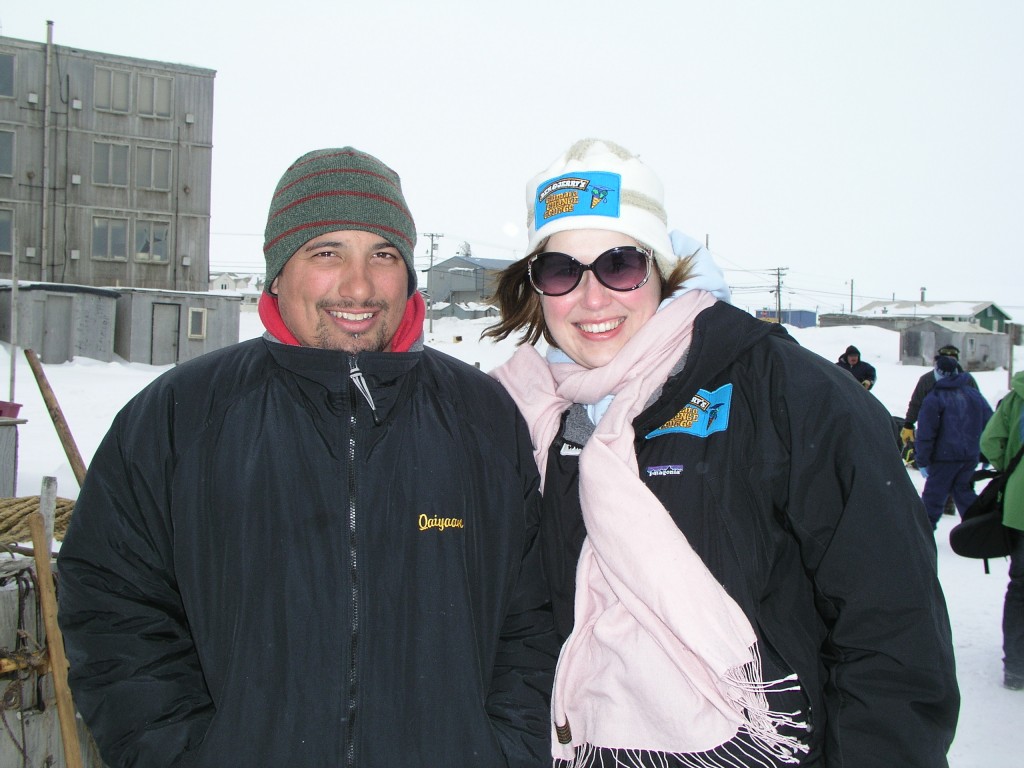
Cara and Kayan – “Give me a solar-powered snow mobile and I’ll use it” was the young Eskimo’s quip in Barrow, Alaska, in 2008.
Back in 2008, the Ice Blog was born when I was on a trip to Alaska reporting on the “Climate Change College”, a joint project by WWF and an ice cream company to interest young people in climate change. Young climate ambassadors from Europe had won a trip to Arctic Alaska to find out first hand about the impacts of climate change – and to meet with young people in the region. I am still in contact with some of the ex-ambassadors, who are continuing to make contributions to climate and environment protection in their careers and everyday lives. Cara Augustenborg in this photo is a successful academic, entrepreneur and Green Party candidate in Ireland. Kayan, I wonder if you are still in Alaska and if you ever got yourself an environment-friendly means of transport?
Anyway, I have Elías Thórsson from the Arctic Journal to thank for drawing my attention to a new youth project inside the Arctic: YAC, the Youth Arctic Coalition. It sees itself as “Youth collaboration to address environmental, economic and social challenges and opportunities in the Arctic”. The latest edition of the Arctic Journal has a story by Elías on the group and the need to include young people in decisions on Arctic issues, headlined “Carpe Arcticum”.
Indeed, the Arctic is one of the fastest changing places on the planet. With countries as far away as China or Japan making their interest(s) plain, what happens in the Arctic today will have a huge impact to the region future generations in the High North will inherit.
During my latest visit to Arctic Norway in January, young protesters in Tromso told me of their fears about the environmental impacts of Arctic oil drilling. During visits to Alaska, I spoke to young Inupiat residents who were more concerned about jobs and hoping to continue to benefit from wealth from the oil industry. In Greenland, some of the youngsters I spoke to were torn between concern about the melting ice and changes to the lifestyle they had grown up with, and the hope that climate change might bring jobs and prosperity to their Arctic island.
The YAC, which held its inaugural conference in February, is trying to bring young people from across the Arctic together to have their say in what is happening. It is not an easy task, as Elías explains in the article. Clearly, views amongst young people will cover as wide a spectrum as those of any other generation. But they will be united in their interest in looking beyond the short-term interests which influence business and politics today.
So good luck to YAC and here’s hoping your organization will attract a lot of interest. And that it will inspire a lot of active participation to shape a sustainable future for the Arctic and represent the interests of coming generations in a region in danger of losing its identity amidst the ever-faster changes caused by a warming climate.
Migratory Bird Day: Remember the Arctic!
This weekend, bird and nature-lovers around the world will be marking “World Migratory Bird Day“. This is a relatively new annual event in the global calendar of “special days”. It has only been celebrated since 2006. You may well be sceptical about the value of yet another day of “xyz”, quite simply because of the sheer number of them. This one was the brainchild of, amongst others, Bert Lenten, who is currently deputy-head of CMS, the Convention on Migratory Species. I have interviewed him on bird-related issues a few times in recent years. CMS, which is part of UNEP, has its headquarters here in Bonn, close to my Deutsche Welle office. The CMS agreement is also known as the Bonn Convention.
When I talked to Bert this week, he told me the idea of having a World Migratory Bird Day came up when bird flu first hit Europe in 2005. There was such a lot of panic and so many negative reactions to migratory birds, wrongly suspected of being a main cause of the outbreak, that Bert and some colleagues had the idea of reminding people once a year that birds are actually something positive.
Migratory birds, from large albatrosses, storks or geese to smaller terns, swallows or tiny sanderlings cover huge distances between their winter quarters and their breeding grounds every year. The Arctic is home to thousands of them every summer, when they fly up to breed. The Arctic tern is actually thought to hold the record for long-distance migration, flying between the Antarctic and the Arctic. I remember being attacked several times on Svalbard in spring when I advertently got too close to some of their nesting sites. No harm done, I hasten to add. I enjoyed watching their antics.
Now, with climate change affecting the Arctic much more drastically than the rest of the world, birds are finding conditions very different from they used to be. Ferdinand Spina is head of Science at Italy’s National Institute for Wildlife Protection and Research ISPRA, in Bologna, Italy. He is also in charge of the Italian bird ringing centre, and currently also Chair of the Scientific Council of CMS. I talked to him last week and he stressed that climate change is becoming one of the greatest threats to migratory birds. The Arctic is one of the most obvious illustrations.
“Birds are a very important component of wildlife in the Arctic. There are different species breeding in the Arctic. The Arctic is subject to huge risks due to global warming. It is crucially important that we conserve such a unique ecosystem in the world. Birds have adapted to living in the Arctic over millions of years of evolution, and it’s a unique physiological and feeding adaptation. And it is our duty to conserve the Arctic as one of the few if not the only ecosystems which is still relatively intact in the world. This is a major duty we have from all possible perspectives, including an ethical and moral duty, ” he says.
I couldn’t agree more, Fernando. We talked about the seasonal mismatch, when birds arrive too early or too late to find the insects they expect to encounter and need to feed their young. When I visited Zackenberg station in eastern Greenland in 2009, Lars Holst Hansen, the deputy station leader, told me the long-tailed skuas were not breeding because they rely on lemmings as prey. The lemmings were scarce because of changes in the snow cover.
Lars Holst Hansen is back in Zackenberg right now. He also takes some great wildlife photos, so I am happy to recommend a look at his site.
Jeroen Reneerkens is another regular visitor to Zackenberg, as he tracks the migration of Sanderlings between Africa and Greenland. A great project and an informative website!
Morten Rasch from the Arctic Environment Dept of Aarhus University in Denmark is the coordinator of one of the most ambitious ecological monitoring programmes in the Arctic. The Greenland Environment Monitoring Programme includes 2 stations, Zackenberg, which is in the High Arctic region and Nuuk, Greenland’s capital, in the “Lower” Arctic. Hansen and other members of Rasch’s teams monitor 3,500 different parameters in a cross-disciplinary project, combining biology, geology, glaciology, all aspects of research into the fragile eco-systems of the Arctic. At that time, he told me during an interview, ten years of monitoring had already come up with worrying results:
“We have experienced that temperature is increasing, we have experienced an increasing amount of extreme flooding events in the river, we have experienced that phenology of different species at the start-up of their growing season or the appearance of different insects for instance now comes at least 14 days earlier than when we started. And for some species, even one month earlier. And that’s a lot. You have to realise the entire growing season in these areas is only 3 months. When we start up at Zackenberg in late May, or the beginning of June, the ecosystem is completely covered in snow and more or less frozen, and when we leave, in normal years – or BEFORE climate change took over – then we left around 1st September and the ecosystem actually started to freeze up. So the entire biological ecosystem only has 3 months to reproduce and so on. And in relation to that, a movement in the start of the system between 14 days and one month – that’s a lot.”
I can’t write about birds and climate change in the Arctic without mentioning George Divoky, an ornithologist whose bird-monitoring has actually turned into climate-change monitoring on Cooper Island, off the coast of Barrow, Alaska. George looks after a colony of Black Guillemots and spends his summer on the island. In recent years, he has taken to putting up bear-proof nest boxes for the birds, because polar bears increasingly come to visit, as the melting of the sea ice has reduced their hunting options. He has also observed the presence of new types of birds which die not previously come this far north. His website is well worth following.
So, friends of the Arctic. Spare a thought for our feathered friends this weekend. They pollinate plants, control pests and insect populations – and give us that happy feeling of springtime we are enjoying in Bonn this weekend. I am reminded of a young “climate ambassador” in Alaska, flabbergasted to see that the glaciers we had come to observe were no longer visible from the Visitors’ Centre built for that purpose just a few years before. “Everything’s connected”, was his simple statement. Presumably that is why he has spent so much time developing low-carbon solutions for companies around the globe.
Climate change in pictures
Gary Braasch is a photographer who decided some time ago to devote the rest of his working life to documenting the effects of climate change in pictures. I met him on a plane on the way to a conservation summit some time ago, when he was presenting a new photography book. Faithful ice blog watchers may remember the story. One of the pictures was a polar bear on land – I was immediately reminded of a story by George Divoky, ornithologist and climate observer. George monitors black guillemots on Cooper Island, off Barrow, Alaska. He has observed considerable change in the climate in recent years, and has had to take all kinds of measures to protect the birds against hungry bears. He had also told me about an encounter he and a visitor had had with a bear. It turned out the photo and George’s story were one and the same event.
Now I have discovered Gary’s website World View of Global Warming, which is well worth a look. George’s Cooper Island site also has some spectacular pictures.



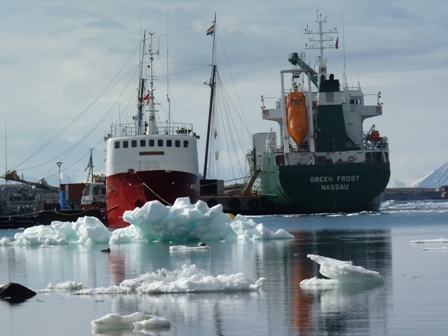



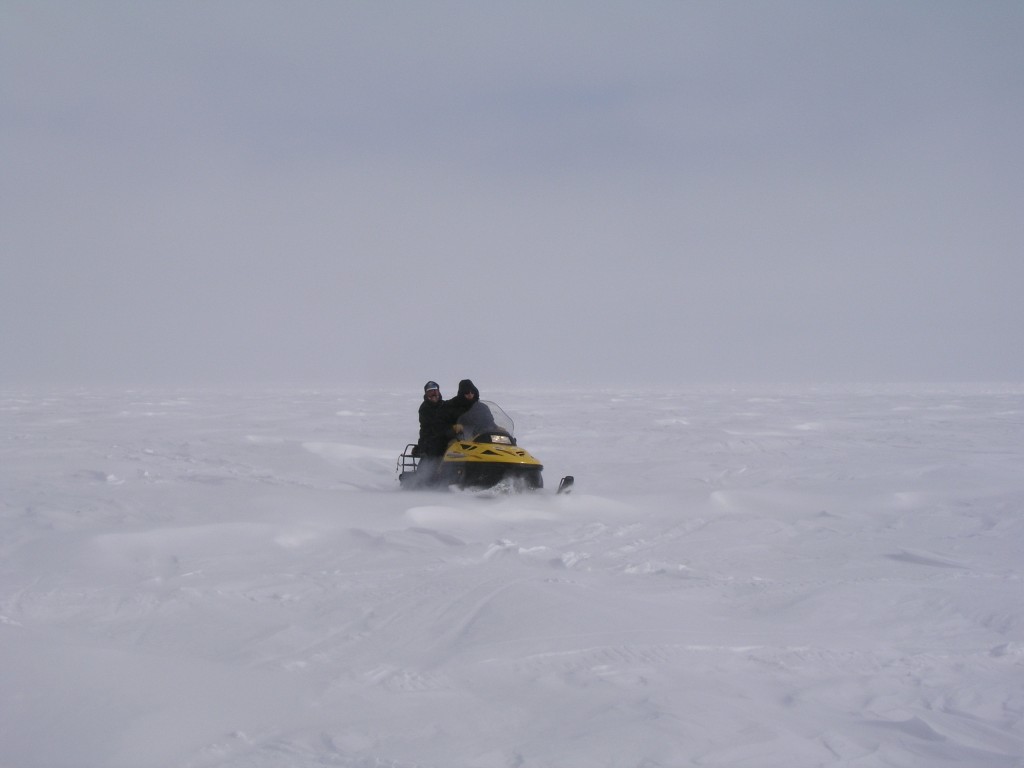


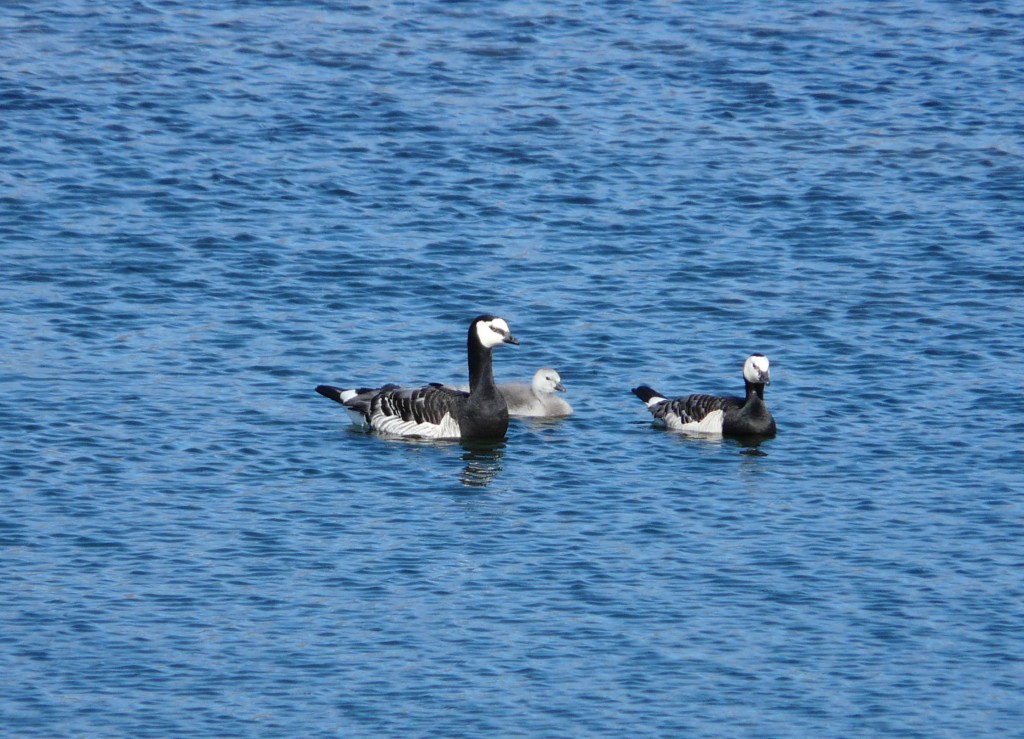

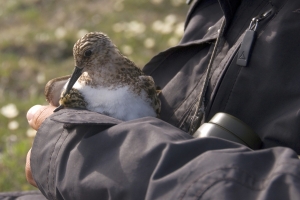
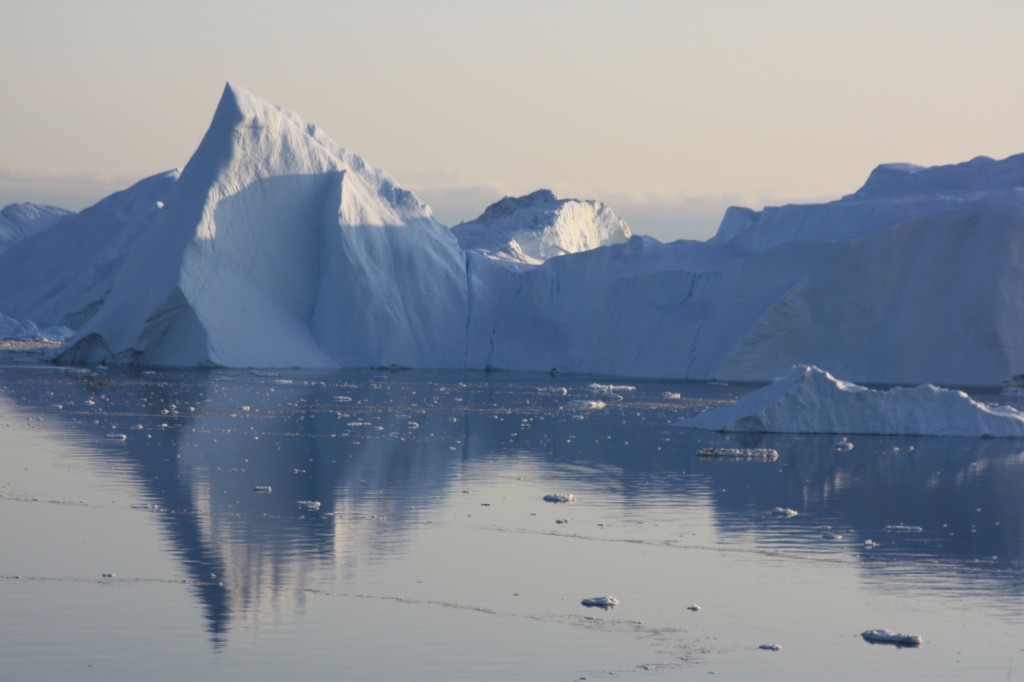
















Feedback